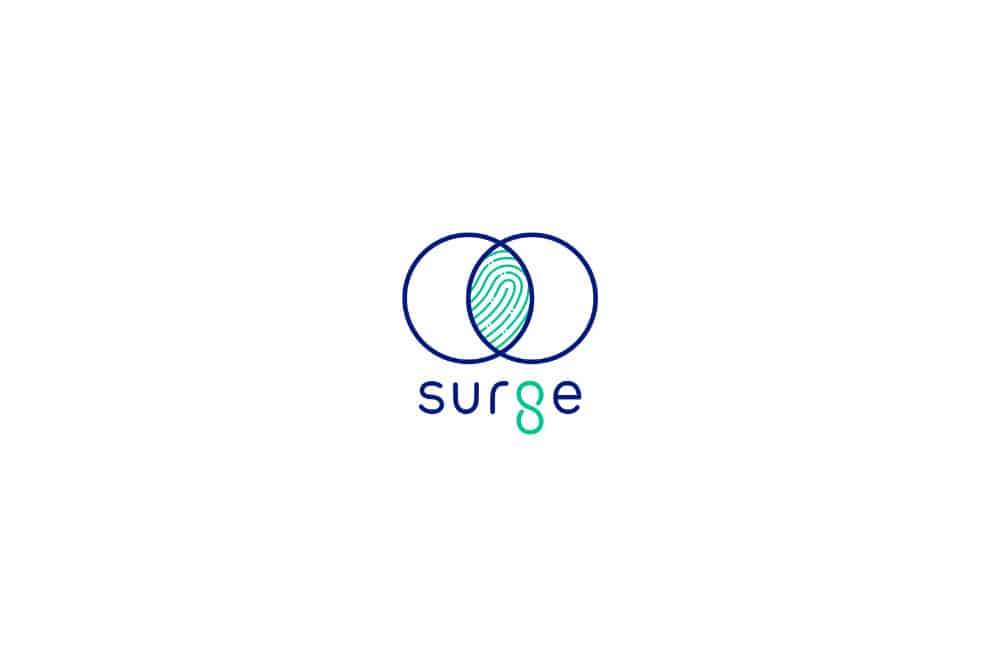ERAS, yes…but how, when, and to which patient?
The benefits of enhanced recovery after surgery (ERAS) protocols in reducing the length of stay after surgery are well established, but significant challenges remain in understanding the effect of ERAS on patient-centered post-surgical complications and outcomes. The multi-modal nature of ERAS protocols, the high inter-patient variability in surgical complications across surgery types, and the lack of pathophysiologically-driven implementation are limitations that may dampen the effect of perioperative interventions on surgical outcomes. A prerequisite for evaluating the effect of ERAS protocols on patient-centered outcomes is the ability to accurately predict surgical complications. As such, prediction will allow personalization of ERAS protocols based on an objective risk stratification strategy. However, existing risk prediction tools predominantly based on clinical parameters perform poorly [1,2].
Innovative approaches are needed, which ones?
Surgery and associated tissue injury is a distinct disease burden characterized by profound and multi-system immune, metabolic, neuro-hormonal, and cardiovascular perturbations. As such, integration of biological parameters echoing mechanisms that drive the pathogenesis of surgical complications is a promising approach to increase the accuracy of risk prediction [3]. Recent advances in omic (e.g., transcriptomic, metabolomic, and proteomic) technologies have transformed our ability to study complex disease processes, such as surgery, with unprecedented depth and cellular resolution. Several questions arise: Which biological system(s) should be targeted? Which omic platform(s) is/are most appropriate? What computational approach is best-adapted for the analysis of high-dimensional multi-omic data? And, what constitutes a clinically-relevant predictive model?
Integrative omics immune profiling to personalize ERAS
Surgery triggers a dynamic and multi-cellular immune response that engages the innate and adaptive branches of the immune system. Complications arise as cell-specific pro-inflammatory and immune-suppressive responses tilt out of balance [4]. Employing single-cell omic platforms, such as mass cytometry or single-cell RNAseq, that can capture the dynamic and multicellular nature of the immune response to surgery is thus a highly plausible strategy for identifying predictive biomarkers of surgical complications.
Over the past decade, single-cell mass cytometry and other high-content proteomic technologies have been successfully utilized in translational studies to comprehensively characterize the human immune response to surgery, provide a detailed profile of the immune-modifying properties of various peri-operative interventions, and identify immunological signatures predictive of surgical outcomes [5-9]. Recent applications of high dimensional omics to study patients undergoing major abdominal surgery have already yielded highly promising predictive models of surgical site infections (SSI) [10-12]. Using the area under the receiver operating curve (AUROC) as a measure of predictive model accuracy, we report an AUC>0.9 equating to excellent and clinically-relevant predictive performance for the prediction of SSI’s. Importantly, predictive models derived from the single cell data are anchored on relevant and interpretable biology, as model features point to cell-specific and co-regulated pro-inflammatory or immunosuppressive cell responses.
The accurate prediction of surgical complications based on single-cell profiling of patients’ preoperative immune states has important implications for the design of interventional ERAS studies. Integration of immune system profiling with other omics, as well as clinical and procedure-specific data will be critical in building multi-modal predictive models with increasing accuracy. Future studies utilizing surrogate measures of surgical complications and an objective risk stratification strategy derived from such models will be important to provide definitive evidence for the benefits of personalized ERAS protocols on patient-centered surgical outcomes.
Bibliographic references
1 Eamer, G., Al-Amoodi, M. J. H., Holroyd-Leduc, J., Rolfson, D. B., Warkentin, L. M. & Khadaroo, R. G. Review of risk assessment tools to predict morbidity and mortality in elderly surgical patients. American journal of surgery 216, 585-594, doi:10.1016/j.amjsurg.2018.04.006 (2018).
2 Cohen, M. E., Liu, Y., Ko, C. Y. & Hall, B. L. An Examination of American College of Surgeons NSQIP Surgical Risk Calculator Accuracy. Journal of the American College of Surgeons 224, 787-795 e781, doi:10.1016/j.jamcollsurg.2016.12.057 (2017).
3 Verdonk, F., Einhaus, J., Tsai, A. S., Hedou, J., Choisy, B., Gaudilliere, D., Kin, C., Aghaeepour, N., Angst, M. S. & Gaudilliere, B. Measuring the human immune response to surgery: multiomics for the prediction of postoperative outcomes. Current opinion in critical care 27, 717-725, doi:10.1097/MCC.0000000000000883 (2021).
4 Bone, R. C. Immunologic dissonance: a continuing evolution in our understanding of the systemic inflammatory response syndrome (SIRS) and the multiple organ dysfunction syndrome (MODS). Annals of internal medicine 125, 680-687 (1996).
5 Gaudilliere, B., Fragiadakis, G. K., Bruggner, R. V., Nicolau, M., Finck, R., Tingle, M., Silva, J., Ganio, E. A., Yeh, C. G., Maloney, W. J., Huddleston, J. I., Goodman, S. B., Davis, M. M., Bendall, S. C., Fantl, W. J., Angst, M. S. & Nolan, G. P. Clinical recovery from surgery correlates with single-cell immune signatures. Science translational medicine 6, 255ra131, doi:10.1126/scitranslmed.3009701 (2014).
6 Fragiadakis, G. K., Gaudillière, B., Ganio, E. A., Aghaeepour, N., Tingle, M., Nolan, G. P. & Angst, M. S. Patient-specific Immune States before Surgery Are Strong Correlates of Surgical Recovery. Anesthesiology 123, 1241-1255, doi:10.1097/ALN.0000000000000887 (2015).
7 Aghaeepour, N., Kin, C., Ganio, E. A., Jensen, K. P., Gaudilliere, D. K., Tingle, M., Tsai, A., Lancero, H. L., Choisy, B., McNeil, L. S., Okada, R., Shelton, A. A., Nolan, G. P., Angst, M. S. & Gaudilliere, B. L. Deep Immune Profiling of an Arginine-Enriched Nutritional Intervention in Patients Undergoing Surgery. J Immunol, doi:10.4049/jimmunol.1700421 (2017).
8 Fong, T. G., Chan, N. Y., Dillon, S. T., Zhou, W., Tripp, B., Ngo, L. H., Otu, H. H., Inouye, S. K., Vasunilashorn, S. M., Cooper, Z., Xie, Z., Marcantonio, E. R. & Libermann, T. A. Identification of Plasma Proteome Signatures Associated With Surgery Using SOMAscan. Annals of surgery, doi:10.1097/SLA.0000000000003283 (2019).
9 Ganio, E. A., Stanley, N., Lindberg-Larsen, V., Einhaus, J., Tsai, A. S., Verdonk, F., Culos, A., Ghaemi, S., Rumer, K. K., Stelzer, I. A., Gaudilliere, D., Tsai, E., Fallahzadeh, R., Choisy, B., Kehlet, H., Aghaeepour, N., Angst, M. S. & Gaudilliere, B. Author Correction: Preferential inhibition of adaptive immune system dynamics by glucocorticoids in patients after acute surgical trauma. Nature communications 11, 4495, doi:10.1038/s41467-020-18410-y (2020).
10 Rumer, K. K., Hedou, J., Tsai, A., Einhaus, J., Verdonk, F., Stanley, N., Choisy, B., Ganio, E., Bonham, A., Jacobsen, D., Warrington, B., Gao, X., Tingle, M., McAllister, T. N., Fallahzadeh, R., Feyaerts, D., Stelzer, I., Gaudilliere, D., Ando, K., Shelton, A., Morris, A., Kebebew, E., Aghaeepour, N., Kin, C., Angst, M. S. & Gaudilliere, B. Integrated Single-cell and Plasma Proteomic Modeling to Predict Surgical Site Complications: A Prospective Cohort Study. Annals of surgery 275, 582-590, doi:10.1097/SLA.0000000000005348 (2022).
11 Hedou J, Maric I, Bellan G, Einhaus J, Gaudilliere D, Ladant FX, Verdonk F, Stelzer I, Feyaerts D, Tsai A, Ganio E, Sabayev M, Gillard J, Bonham A, Sato M, Diop M, Angst M, Stevenson D, Aghaeepour N, Montanari A, Gaudilliere B. Stabl: sparse and reliable biomarker discovery in predictive modeling of high-dimensional omic data. Res Sq [Preprint]. 2023 Feb 28:rs.3.rs-2609859. doi: 10.21203/rs.3.rs-2609859/v1. PMID: 36909508; PMCID: PMC10002850.
12 Fong, T. G., Chan, N. Y., Dillon, S. T., Zhou, W., Tripp, B., Ngo, L. H., Otu, H. H., Inouye, S. K., Vasunilashorn, S. M., Cooper, Z., Xie, Z., Marcantonio, E. R., & Libermann, T. A. (2021). Identification of Plasma Proteome Signatures Associated With Surgery Using SOMAscan. Annals of surgery, 273(4), 732–742. https://doi.org/10.1097/SLA.0000000000003283



